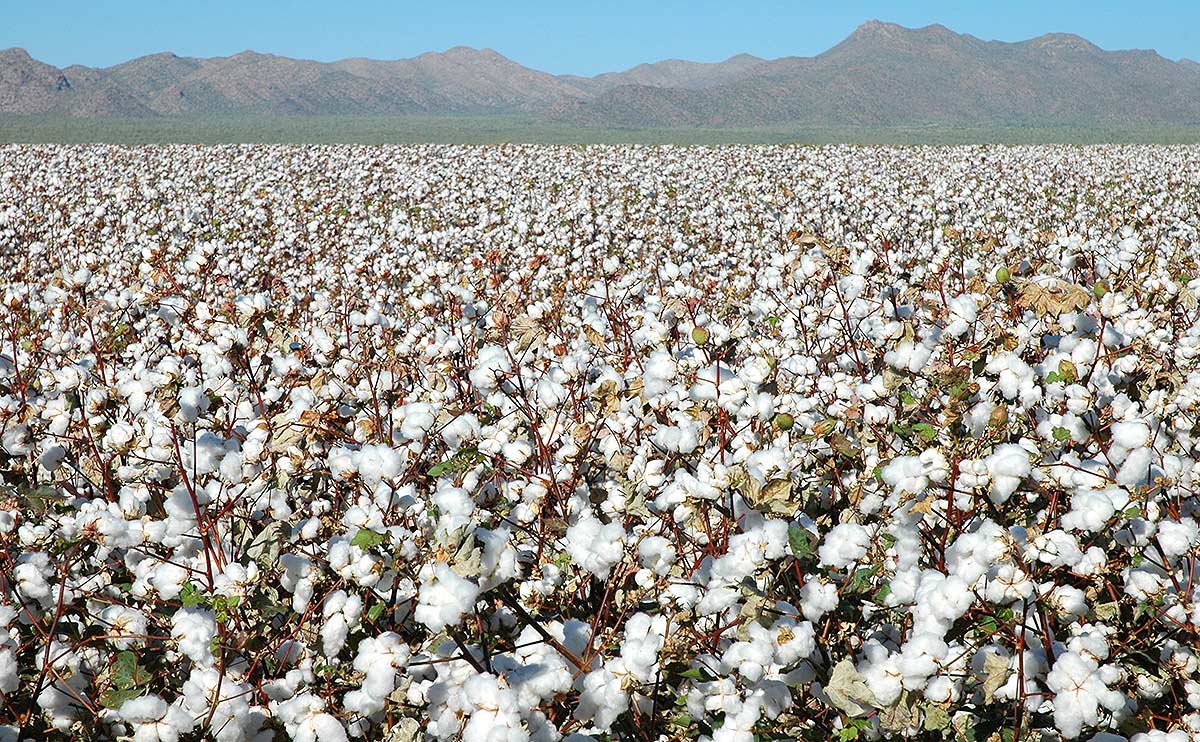China's hybrid market of state-controlled capitalism often yields weirdness, but the government's years-long attempt to manipulate the cotton market is particularly odd.

When China started buying up cotton in 2011, the idea was to put the brakes on plunging prices. It also set a floor on prices for raw cotton. Flash forward three years: Prices are way below what they were when China’s mass buying began. And now China is sitting on a mountain of cotton for which it paid way too much.
Meanwhile, China’s economic growth has continued to slow, and the domestic clamor for cotton has quieted, so China would like to to unload a good portion of its reserve. The problem is, it’s asking for prices that are way higher than what’s being offered on world markets. So even China’s domestic mills are forced to import raw cotton from abroad, instead of from the strategic reserve (or, as much as they can, given China’s import quotas.)
Such is the level of economic expertise among state capitalists, who tend to be more state than capitalist, especially in China’s case. “They’re stuck. Their heads are stuck in a vise here, and they can’t quite figure out how to get out of it,” said Jarral Neeper, president of the huge U.S. cotton-marketing co-op Calcot Ltd, speaking at a conference this month held by the National Cotton Council.
China’s hoarding was meant to protect the country’s farmers, millers and textile firms. But those firms…are increasingly buying imported cotton — particularly from Vietnam, India, and Bangladesh, but also from the U.S.
China started its buying spree in 2011, when prices were headed down, but still ranged between about 95 cents and $1.50 a pound. In that time, the country quintupled its holdings. Many of China’s purchases were made at the higher end of that range. The country has since amassed about 10 million tons, and world prices now are at about 85 cents a pound as of early February, per the benchmark ICE March futures contract.
China’s hoarding was meant to protect the country’s farmers as well as to ensure a steady supply to domestic millers and textile firms. But those firms have been hit hard by the artificially high domestic prices, and are increasingly buying imported cotton — particularly from Vietnam, India, and Bangladesh, but also from the U.S.
Trying to get unstuck, China has begun selling off its stockpile, but it’s doing so very slowly to try to avoid a deep price plunge. And it is demanding a premium: a selloff in November had a price floor of $1.34 a pound. Elsewhere around the world (which in general looks a bit more like a free market, at least compared to China), inventories are high, but are expected to diminish a bit in the next few years. Acreage has decreased some, and prices are right around at the point where many textile makers consider cheaper alternatives such as polyester.
The worry is that China will push too much cotton onto the market, driving prices down too fast. That could hit U.S. growers hard. It would also boost the fortunes of U.S. textile makers (though wouldn’t do all that much for employment, since manufacturing has become highly automated since the U.S. textiles industry collapsed.) It would tend to drive down retail prices.
But fears of a precipitous price plunge might be overblown. The worry that China might flood the market reached a crescendo late last year, when futures prices were at around 77 cents a pound, with future prices now having rebounded somewhat.
The situation is radically different from what it was in late 2010, when the world economy was recovering from the recession. Clothing retailers, especially in the U.S. were worried about a “terrifying” rise in cotton prices. It wasn’t long after that China went on its buying spree.
That terror has been replaced by “some bewilderment” among cotton buyers, according to a September report from Textiles Intelligence. Bewilderment is what happens when a closed economy that was already the biggest producer and exporter of cotton decides to control half the world’s stored supply. Nobody’s quite sure what’s going to happen.
But consumers, particularly in the U.S., see cotton as their default fabric for clothing, and they’re loyal to it. “The consumer market seems oblivious to the machinations further upstream,” according to Textiles Intelligence. “The market has survived the biggest cotton price shock in history, and consumer demand for cotton products remains strong.”